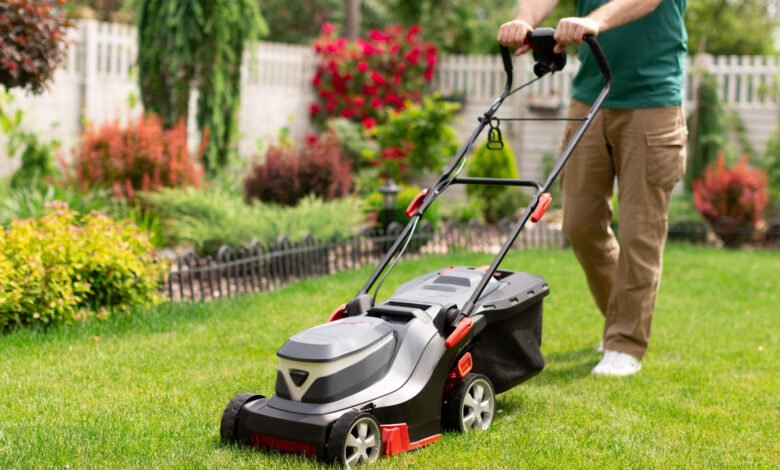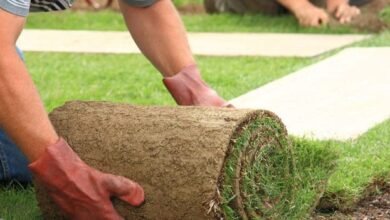Essential Lawn Care Equipment for a Lush Green Yard

The lawn mower is arguably the cornerstone of any effective lawn care regimen. This essential tool comes in various forms, including push mowers, riding mowers, and robotic mowers, each designed to cater to different yard sizes and user preferences. Push mowers, for instance, are ideal for smaller lawns and provide a hands-on approach to mowing, allowing the operator to have complete control over the cutting height and direction.
Riding mowers, on the other hand, are suited for larger properties such as Sydney turf suppliers, offering comfort and efficiency by allowing the user to sit while mowing. Robotic mowers have gained popularity in recent years, utilizing advanced technology to navigate the lawn autonomously, making them a convenient option for busy homeowners. When selecting a lawn mower, several factors come into play, including the type of grass, terrain, and personal preferences.
For instance, a mulching mower can be particularly beneficial for those who prefer to recycle grass clippings back into the lawn, providing natural nutrients and reducing waste. Additionally, the choice between gas-powered and electric mowers can significantly impact the mowing experience. Gas mowers tend to offer more power and longer run times, making them suitable for larger areas, while electric mowers are quieter and more environmentally friendly, appealing to eco-conscious users.
Understanding these nuances can help homeowners make informed decisions that align with their lawn care goals.
Trimmer/Edger
Reaching Tight Spots
Equipped with a rotating string or blade, trimmers can reach those tight spots that mowers cannot, ensuring that every inch of the lawn is neatly maintained. Edgers take this a step further by creating clean lines between the grass and hard surfaces, enhancing the overall aesthetic of the yard.
Types of Trimmers
There are various types of trimmers available on the market today, including string trimmers and blade trimmers. String trimmers are versatile and lightweight, making them easy to maneuver around obstacles like trees and garden beds. They are particularly effective for trimming grass in hard-to-reach areas. Blade trimmers, while heavier and more powerful, are better suited for tougher tasks such as cutting through thick weeds or brush.
Choosing the Right Trimmer
Homeowners should consider their specific needs when choosing between these options; for example, those with extensive landscaping may benefit from a more robust blade trimmer, while those with simpler lawns might find a string trimmer sufficient.
Rake
The rake is a classic gardening tool that has stood the test of time due to its simplicity and effectiveness. While it may seem straightforward in design—a long handle with a series of tines at one end—the rake serves multiple purposes in lawn care and gardening. Primarily used for gathering leaves and debris during the fall season, rakes can also be employed to level soil, spread mulch, or even break up clumps of grass.
The versatility of this tool makes it a staple in any gardener’s arsenal. Different types of rakes cater to various tasks. For instance, a leaf rake features flexible tines that easily gather leaves without damaging the grass beneath.
In contrast, a garden rake has sturdier tines designed for breaking up soil and leveling garden beds. Homeowners should consider their specific needs when selecting a rake; for example, those with large yards may opt for a wider rake to cover more ground quickly, while those with smaller gardens might prefer a more compact model for precision work. Understanding the various applications of rakes can enhance their effectiveness in maintaining a healthy lawn and garden.
Fertilizer Spreader
As well as a quality lawn mower, a fertilizer spreader is an essential tool for anyone looking to maintain a lush and healthy lawn. This device allows homeowners to evenly distribute fertilizer across their lawns, ensuring that every blade of grass receives the nutrients it needs to thrive. There are two primary types of fertilizer spreaders: broadcast spreaders and drop spreaders.
Broadcast spreaders release fertilizer in a wide arc as the user walks across the lawn, making them ideal for large areas where even coverage is crucial. Drop spreaders, on the other hand, release fertilizer directly beneath the hopper, allowing for precise application along edges and flower beds. When using a fertilizer spreader, timing and technique are critical for achieving optimal results.
Applying fertilizer during the growing season—typically in spring and early fall—ensures that grass can absorb nutrients effectively. Additionally, understanding the type of fertilizer being used is essential; granular fertilizers require different settings on the spreader compared to liquid fertilizers. Homeowners should also be mindful of weather conditions; applying fertilizer before heavy rain can lead to runoff and nutrient loss.
By mastering the use of a fertilizer spreader, homeowners can significantly enhance their lawn’s health and appearance.
Hose and Sprinkler
Watering is a fundamental aspect of lawn care, making hoses and sprinklers vital tools for maintaining a vibrant landscape. A garden hose provides flexibility and control when watering specific areas of the lawn or garden beds. Available in various lengths and materials, hoses can be easily maneuvered around obstacles like trees or flower beds.
Many homeowners opt for hoses equipped with adjustable nozzles that allow them to switch between different spray patterns—such as misting for delicate plants or a strong stream for deep watering. Sprinklers complement hoses by automating the watering process over larger areas. There are several types of sprinklers available, including stationary sprinklers that cover a fixed area and oscillating sprinklers that move back and forth to cover wider spaces.
For those with extensive lawns or gardens, in-ground sprinkler systems offer convenience by providing consistent watering schedules without manual effort. Understanding the water needs of different plants is crucial; some areas may require more frequent watering than others based on sun exposure and soil type. By effectively utilizing hoses and sprinklers, homeowners can ensure their lawns receive adequate hydration throughout the growing season.
Soil Aerator
Soil aeration is an often-overlooked aspect of lawn care that plays a crucial role in promoting healthy grass growth. A soil aerator is designed to perforate the soil with holes, allowing air, water, and nutrients to penetrate deeper into the root zone. This process alleviates soil compaction—a common issue in heavily trafficked areas—and encourages root development by creating an environment conducive to growth.
Aeration is particularly beneficial for lawns that experience heavy foot traffic or have clay-heavy soils that tend to compact easily. There are two main types of soil aerators: spike aerators and core aerators. Spike aerators create holes by pushing through the soil with spikes; however, they can sometimes lead to further compaction around the holes they create.
Core aerators are generally more effective as they remove small plugs of soil from the ground, allowing for better airflow and nutrient absorption. Timing is also essential when aerating; early spring or fall is typically recommended when grass is actively growing but not under stress from heat or drought conditions. By incorporating soil aeration into their lawn care routine, homeowners can significantly improve their lawn’s health and resilience.
Leaf Blower
As autumn approaches and leaves begin to fall, leaf blowers become indispensable tools for maintaining a tidy yard. These powerful devices allow homeowners to quickly clear away leaves and debris from driveways, sidewalks, and lawns without the back-breaking labor associated with traditional raking methods. Leaf blowers come in various forms—gas-powered models offer high power and mobility for larger properties, while electric models provide quieter operation suitable for residential areas.
In addition to clearing leaves, leaf blowers can also be used year-round for other tasks such as removing grass clippings after mowing or clearing debris from patios and decks. Some models even come equipped with vacuum capabilities that allow users to collect leaves directly into a bag for easy disposal or composting. When using a leaf blower, it’s important to consider local regulations regarding noise levels and air quality; many municipalities have restrictions on gas-powered equipment during certain hours or seasons.
By effectively utilizing leaf blowers during peak leaf-fall seasons, homeowners can maintain an attractive landscape with minimal effort.
Lawn Roller
A lawn roller is an often underappreciated tool that plays a significant role in establishing a smooth and even lawn surface. Typically used after seeding or sodding, lawn rollers help ensure good seed-to-soil contact by pressing seeds into the ground where they can germinate effectively. This process is particularly important when establishing new lawns or overseeding existing ones; without proper contact with the soil, seeds may fail to sprout or develop weak root systems.
Lawn rollers come in various sizes and weights; some are designed to be filled with water or sand to increase their weight for better compaction results. When using a lawn roller, timing is crucial; it’s best applied when the soil is moist but not overly wet to avoid damaging delicate seedlings or compacting already established grass roots. Additionally, rolling should be done carefully to avoid creating uneven surfaces or compacting areas too much—this can lead to drainage issues or hinder root growth over time.
By incorporating a lawn roller into their lawn care practices, homeowners can achieve a lush and well-established lawn that enhances their outdoor space’s overall appeal.




